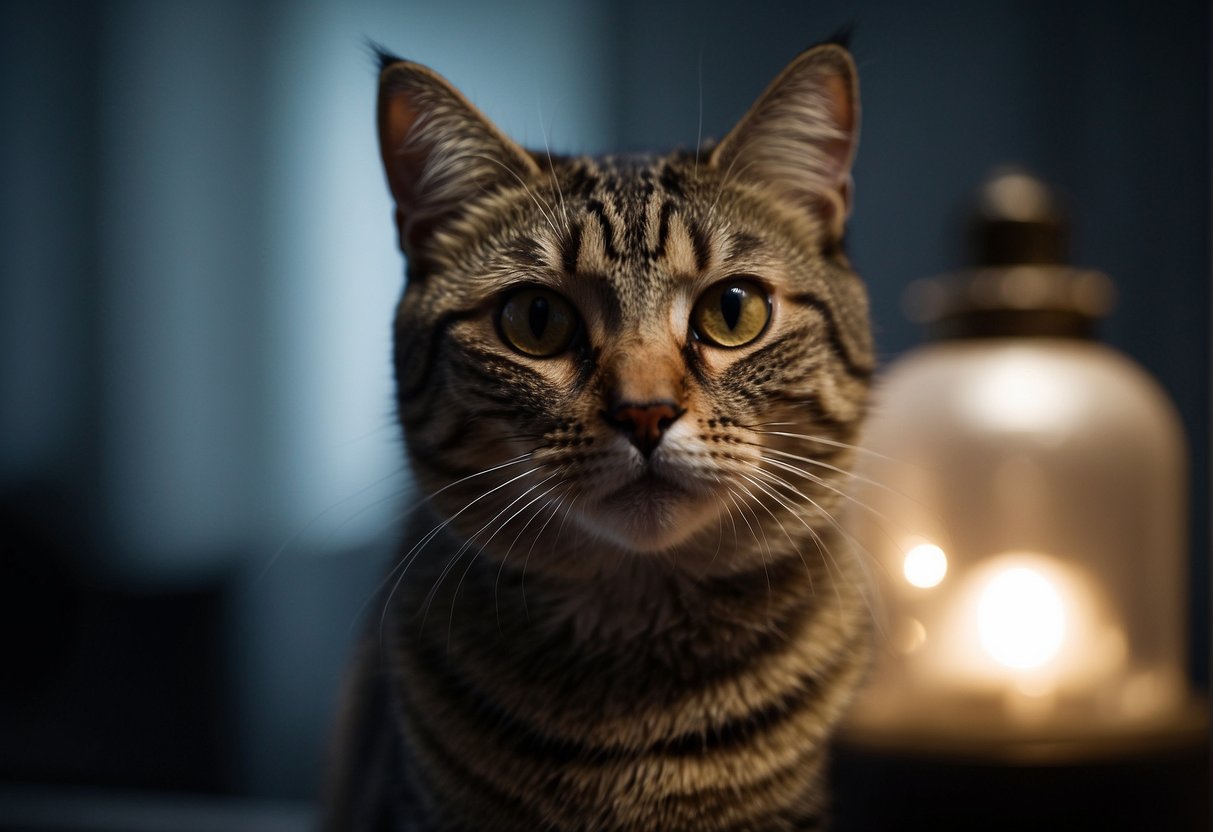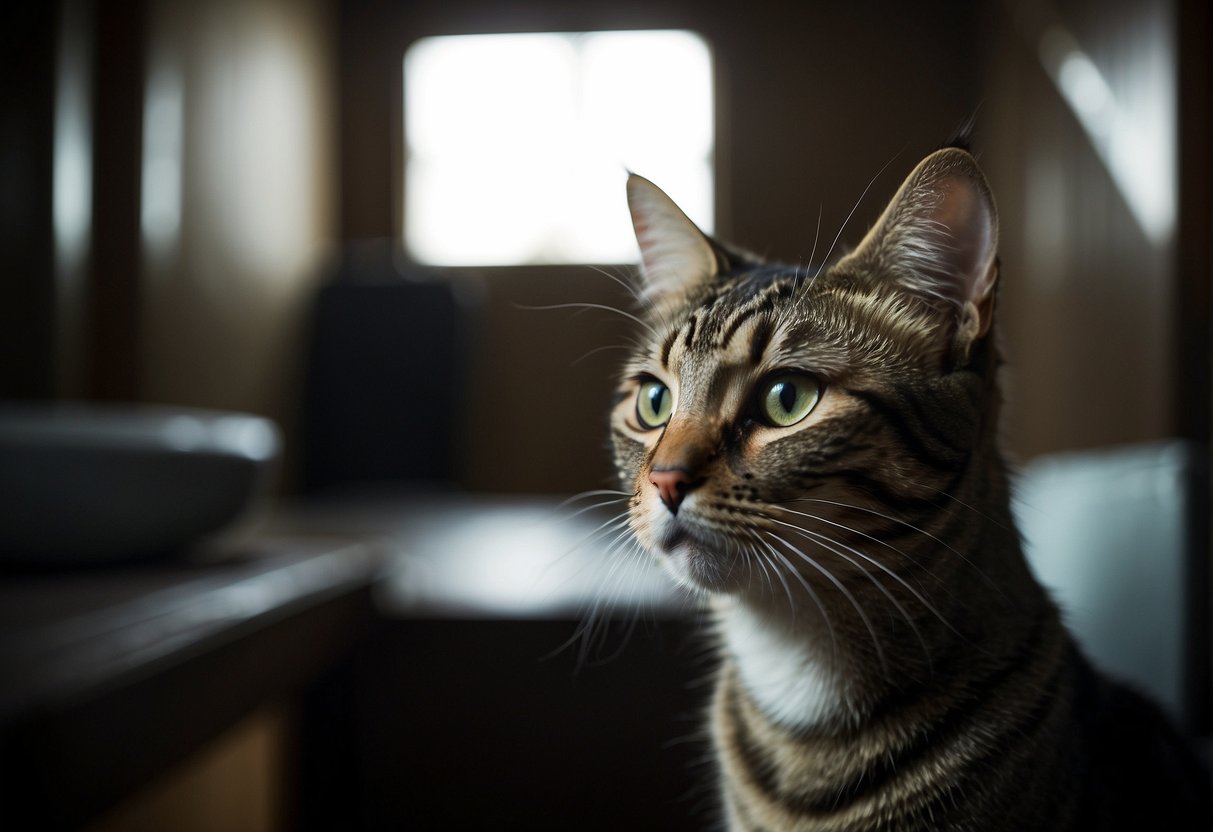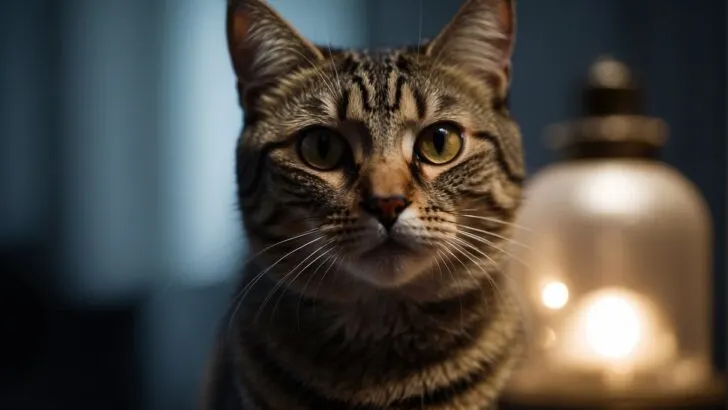Cats possess a range of sensory abilities that far exceed our own, which often leads to the intriguing question—can your feline friend see ghosts?
Over time, you may have noticed your cat fixating intently on something you can’t see, or reacting to what appears to be thin air. Their behavior can seem eerie, but it’s rooted in their advanced senses.

Your cat relies heavily on its keen sense of hearing and sight, especially at night.
The feline eye structure allows them to detect very subtle movements, thanks to their large corneas and pupils that expand to let in more light.
In low light conditions, your cat is not just seeing better than you; they might be noticing insects or dust particles that are invisible to the human eye.
It’s not just their vision, either. Cats have incredibly sensitive hearing and can detect a wide range of frequencies, making them aware of sounds that we may not notice.
Whether cats can perceive the supernatural is a mystery steeped in folklore and anecdotal evidence.
However, when your cat suddenly sprints from one end of the house to the other or intently watches over your shoulder, it’s most likely their extraordinary senses in action rather than an encounter with the paranormal.
Understanding Cat Senses
Cats possess exceptional senses that contribute to their nocturnal prowess and agility. These heightened abilities allow them to navigate their environment, hunt effectively, and communicate with both humans and other animals.

Vision and Night Vision
Your cat’s eyes are powerful tools that provide them with excellent night vision.
Cats can see in low light conditions much better than we can thanks to a high number of rods in their retinas, which are photoreceptor cells sensitive to dim lighting.
Their vision is further enhanced by a special layer behind the retina called the tapetum lucidum, reflecting light that passes through the retina back into their eyes, making everything brighter during the night.
Cats also have a wider field of view and can detect subtle movements better than humans. Recent studies suggest they can even perceive ultraviolet light, which is invisible to us.
Hearing Abilities
The feline ability to hear is among the best in the animal kingdom.
Cats have a broad range of frequencies they can detect, from the high-pitched squeak of a mouse to the lower sounds that might signal an approaching predator.
Their ears can rotate almost 180 degrees and have 32 muscles that allow for precise directional hearing. This means they can pinpoint the exact location of a sound with remarkable accuracy.
If you’ve noticed your cat’s ears twitching, it’s their way of honing in on the source of a noise.
Smell and Whiskers
A cat’s sense of smell is fundamental to its survival and communication.
Their olfactory system is so advanced that it’s not only used to detect food and identify threats but also to recognize territorial markings and the scent of other cats.
Additionally, whiskers don’t only add to their acute sense of touch but also help them navigate in tight spaces and during the night.
These vibrissae are so sensitive that they can detect even the slightest changes in their surroundings and air currents, assisting them in assessing their environment or the approach of other creatures.
The Feline and the Supernatural
Your kitty’s peculiar behaviors might have made you ponder whether they have a special connection to the unseen.
Historical Beliefs and Mythology
In ancient Egypt, cats were more than just pets; they were revered and often associated with deities.
Bastet, the goddess of home, fertility, and childbirth, was depicted with a cat’s head and thought to protect the home from evil spirits.
Cats were worshipped, and killing one, even accidentally, was considered a serious crime.
The tribute to cats didn’t end there; they were often mummified and buried with their owners to provide protection in the afterlife. This elevated status stemmed from their mysterious nature and behaviors, which ancient civilizations linked with the supernatural.
Feline Behavior and the Paranormal
When your cat fixates on a seemingly empty space or suddenly darts around the house as if chasing an unseen entity, it’s easy to think they might be sensing a poltergeist or spirit.
However, their actions are more likely driven by their impressive instinctual abilities.
Cats have acute senses, notably their vision and hearing, allowing them to detect the slightest energy changes in their environment beyond human perception.
Their famed curiosity can also explain why they investigate seemingly random points of space—often, they’ve noticed a tiny insect or the movement of dust particles that escape our notice.
These behaviors have spun plenty of stories and legends, fueling the notion that cats can perceive the paranormal. Yet science leans towards the view that cats react to tangible environmental cues, not to supernatural occurrences.
Is ‘Cats See Ghosts’ Fact or Fiction?
When your feline friend gazes intently into the void, it’s easy to wonder if they’re seeing ghosts or merely showcasing their incredible sensory abilities. Let’s explore the validity of these claims with a blend of science and expert insights.
Debunking Myths with Science
Cats are often regarded as mystical creatures, with behaviors that pique our curiosity. Ancient Egyptians even worshiped them for their grace and poise.
Today, however, we understand that cats’ eyesight is adapted to make them superb low-light hunters, not paranormal detectors.
The myth that cats see ghosts may originate from their ability to detect movement and light in the ultraviolet light spectrum, which is invisible to humans. This enhanced vision can lead them to react to stimuli that we simply cannot perceive.
Moreover, these prehistoric predators evolved to excel in their environments, which can account for some behaviors that might seem unusual to us.
While some may interpret a cat’s focused meowing or staring as a sign they’ve seen a ghost, it’s more likely they’ve noticed a small insect or a dust mote caught in a shaft of light.

My name is James, and welcome to FAQCats!
Along with our team of cat owners, expert pet enthusiasts, and pet professionals, we aim to write engaging helpful, engaging content about cats. At FAQCats we strive to provide content that’s accurate and fun to read. Our team writes about everything related to cats; even the most complex of topics. Through extensive research and caring for our own fur-pals, we’re able to provide something cat owners worldwide will love. Have a look around, and leave us feedback anytime!

